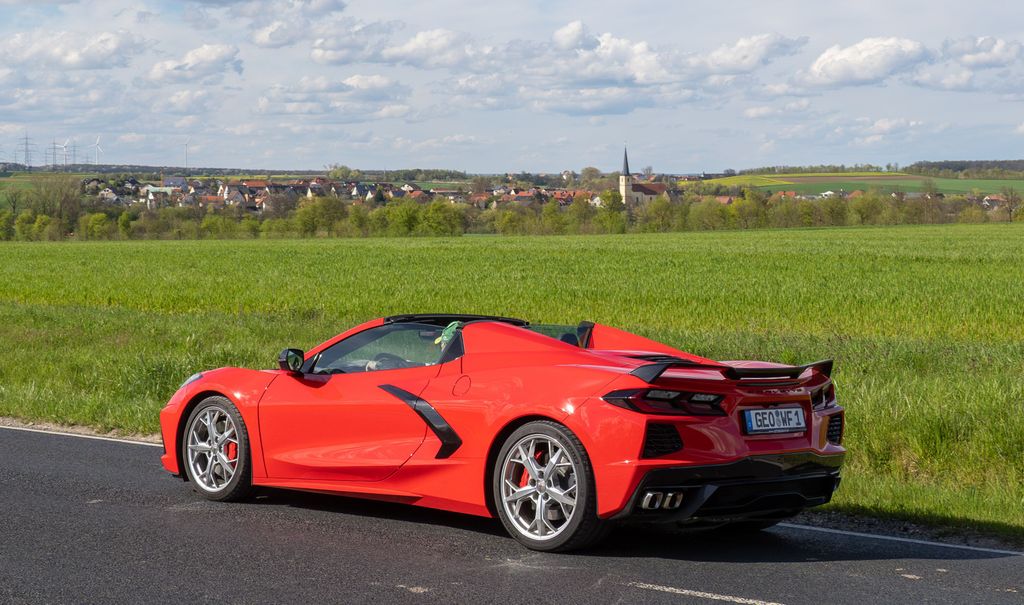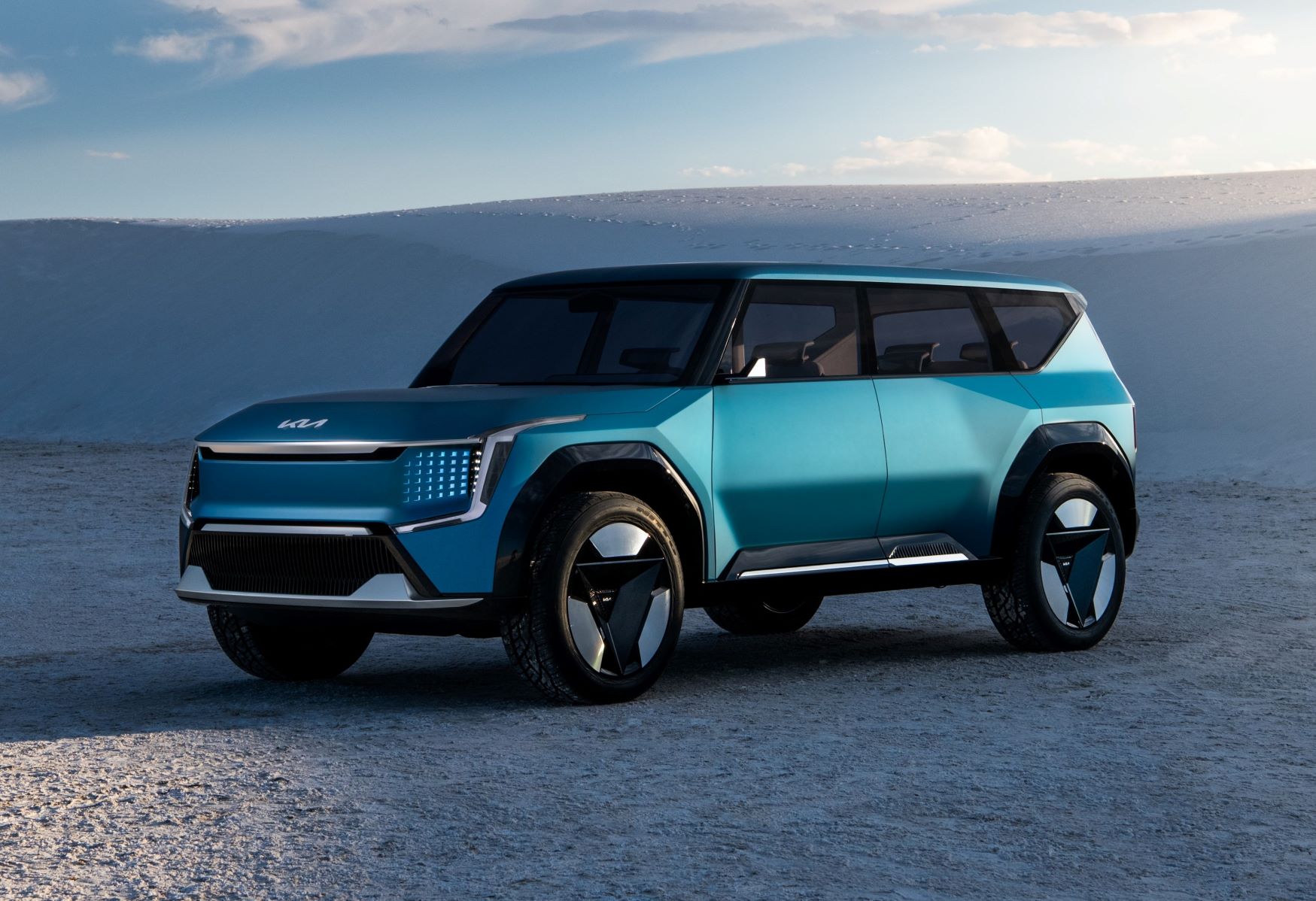
For many SUV shoppers, the expectation of long-term reliability and enduring performance is a paramount concern. The prospect of owning a vehicle that can reliably serve for hundreds of thousands of miles, potentially for a lifetime, offers not only peace of mind but also significant financial advantages. These benefits include better resale value due to sustained worth, reduced ownership costs through fewer major repairs, increased dependability for crucial family use and long-distance travel, and ultimately, a stronger return on investment over a decade or more of ownership.
Achieving such impressive longevity in an SUV is not a matter of chance; it is the result of deliberate engineering, robust materials, and time-tested designs that prioritize sustained function over fleeting trends. Key factors contribute to an SUV’s ability to surpass the 200,000-mile mark. These include the implementation of proven engine and transmission technologies, often favoring naturally aspirated V6 or V8 engines with modest compression ratios designed for regular gasoline over more complex turbocharged systems. Similarly, traditional automatic transmissions with fewer moving parts tend to exhibit greater durability than advanced CVTs or dual-clutch systems.
Beyond powertrain choices, simplicity in overall vehicle design plays a crucial role. SUVs with fewer intricate electronic sensors, motorized actuators, and software-dependent systems often demonstrate enhanced longevity compared to those heavily reliant on high-tech electronics that can fail over time. Manufacturer reputation for reliability, as seen in brands like Toyota, Lexus, and Honda, also signals a commitment to robust, easy-to-service components and a straightforward design philosophy that prioritizes mechanical resilience and structural integrity. This deep dive focuses on ten SUVs specifically equipped with engines renowned for their extraordinary durability, powerplants so robust they can potentially last the lifetime of the vehicle when properly maintained.

1. **Toyota Land Cruiser**The Toyota Land Cruiser has earned an undisputed reputation for indestructibility, a characteristic that fundamentally begins with its legendary powerplant. The vehicle’s V8 engine is a prime example of Toyota’s engineering philosophy, which emphasizes over-building components to ensure maximum durability. This naturally aspirated engine is constructed with a cast-iron block and aluminum heads, a combination that provides an optimal balance between managing vehicle weight, effectively dissipating heat, and maintaining structural integrity under demanding conditions.
A key aspect of this engine’s exceptional nature is its conservative tuning. Unlike some competitors that prioritize headline-grabbing horsepower figures, Toyota deliberately limits the engine’s output to prioritize its longevity. This considered approach results in lower operating temperatures and reduced internal stress on the engine’s components, allowing many Land Cruiser engines to achieve 500,000 or more miles without requiring internal repairs. The cooling system is particularly noteworthy, featuring an oversized radiator and an oil cooler designed to ensure optimal operating temperatures are maintained, even when the vehicle is subjected to extreme conditions.
Toyota’s meticulous attention to detail extends to the design of the timing chain, a component that, unlike timing belts found in numerous competitor vehicles, rarely necessitates replacement. Owners frequently report trouble-free operation extending well beyond 300,000 miles, provided basic maintenance is adhered to. The bulletproof reputation of this engine is a significant factor contributing to the Land Cruiser’s exceptional resale value in the automotive market. Toyota’s quality control standards for this flagship SUV are unparalleled, with each engine undergoing rigorous testing processes before it is installed.
The Land Cruiser’s engine is not merely durable; it is also designed with serviceability in mind. Its components are accessible, which makes maintenance straightforward. This practical engineering approach ensures that even vehicles with high mileage remain viable transportation options for decades rather than just a few years. For consumers seeking an SUV engine that offers true long-term reliability, the Land Cruiser’s powerplant serves as a benchmark for comparison.
Car Model Information: 2025 Genesis GV80 3.5T
Name: Toyota Land Cruiser
Caption: 2021 Toyota Land Cruiser ZX (VJA300, Colombia)
Manufacturer: Toyota
Production: 1951–present
Class: unbulleted list
Layout: Front-engine, four-wheel-drive
Categories: 1960s cars, 1970s cars, 1980s cars, 1990s cars, 2000s cars
Summary: The Toyota Land Cruiser, also sometimes spelt as LandCruiser, is a series of four-wheel drive vehicles produced by the Japanese automobile manufacturer Toyota. It is Toyota’s longest running series of models. As of 2019, the sales of the Land Cruiser totalled more than 10 million units worldwide. Production of the first generation of the Land Cruiser began in 1951. The Land Cruiser has been produced in convertible, hardtop, station wagon and cab chassis body styles. The Land Cruiser’s reliability and longevity have led to huge popularity, especially in Australia, where it is the best-selling body-on-frame, four-wheel drive vehicle. Toyota also extensively tests the Land Cruiser in the Australian outback – considered to be one of the toughest operating environments in both temperature and terrain. In Japan, the Land Cruiser was once exclusive to Toyota Japanese dealerships called Toyota Store. Since 1990, the smaller variation of the Land Cruiser has been marketed as the Land Cruiser Prado. Described as a ‘light-duty’ version of the Land Cruiser by Toyota, it features a different design compared to the full-size model and, up until 2023, it remains the only comfort-oriented Land Cruiser available with a short-wheelbase 3-door version. As of 2023, the full-size Land Cruiser was available in many markets. Exceptions include the United States (since 2021 where the smaller Land Cruiser Prado has been sold under the Land Cruiser name since 2024), Canada (since 1996), Malaysia (which receives the Lexus LX instead), Hong Kong, Macau, South Korea, Brazil, and most of Europe. In Europe, the only countries where the full-size Land Cruiser is officially sold are Gibraltar, Moldova, Russia, Belarus, and Ukraine. The Land Cruiser is hugely popular in the Middle East, Russia, Australia, India, Bangladesh, Pakistan, New Caledonia, and Africa. It is used by farmers, the construction industry, non-governmental and humanitarian organizations, the United Nations, national armies (often the pickup version), and irregular armed groups who turn them into “technicals” by mounting machine guns in the rear. In August 2019, cumulative global sales of the Land Cruiser family surpassed 10 million units.
Get more information about: Toyota Land Cruiser
Buying a high-performing used car >>>
Brand: Toyota Model: Land Cruiser
Price: $63,683 Mileage: 5,413 mi.
Read more about: Golden Years, Chrome Dreams: Unlocking the Hobby and Investment Potential of Classic Cars for Retirees
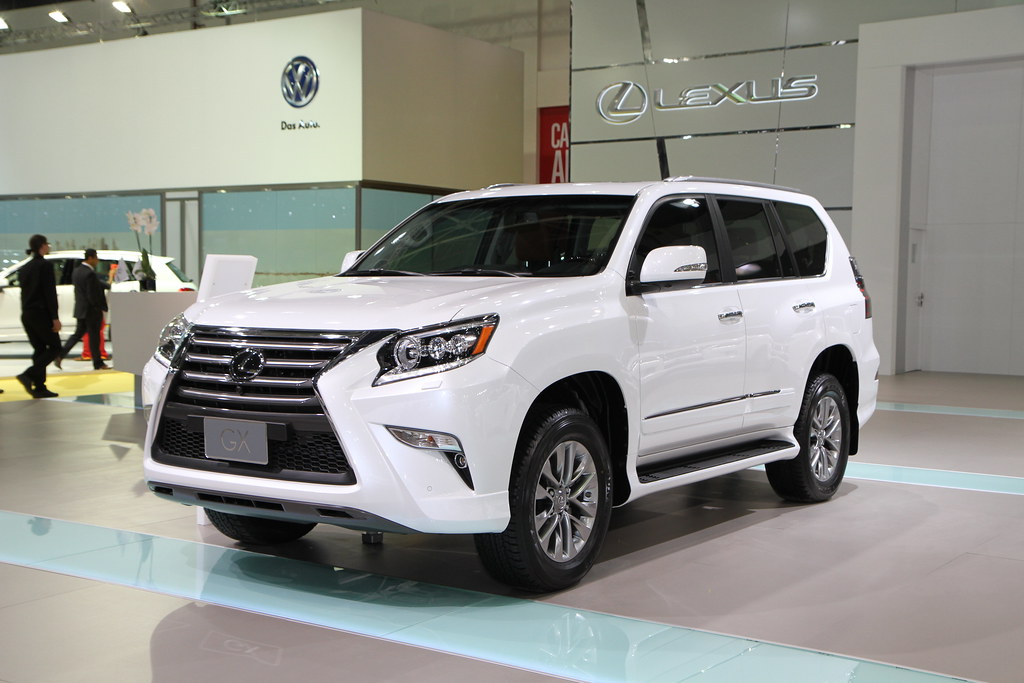
2. **Lexus GX**The Lexus GX’s remarkable durability is largely attributed to its powerful V8 engine, which shares its fundamental architectural design with Toyota’s highly reliable truck powerplants. This engine integrates time-tested design principles with the refinements expected of a luxury vehicle, resulting in a powertrain that is both exceptionally reliable and notably smooth in its operation. The design of the GX’s engine notably achieves a harmonious balance between power delivery and mechanical resilience.
Operating well within its engineered limitations, the engine rarely exhibits signs of strain, even when it is used for towing heavy loads or traversing challenging terrains. The engine features a robust aluminum block complemented by cast-iron cylinder sleeves, which are incorporated for enhanced durability. A sophisticated variable valve timing system optimizes efficiency without compromising the engine’s core reliability. Lexus engineers have also included additional oil jets for piston cooling, a design choice that significantly reduces thermal stress on critical components and contributes to the engine’s impressive tolerance for diverse driving conditions.
The inclusion of a dual-row timing chain in the GX’s engine virtually eliminates one of the most common points of failure found in less durable engine designs. Maintenance records from vehicles with high mileage consistently show minimal wear on internal components, even after more than 250,000 miles of operation. The engine’s design adheres to conservative tolerances, enabling it to maintain proper oil pressure and compression ratios well into the six-figure mileage range. Technicians frequently observe remarkably clean internals when inspecting high-mileage GX engines, which speaks to their enduring quality.
The GX’s powerplant benefits from Toyota’s renowned quality control standards, with each engine undergoing extensive testing before installation. This detailed attention ensures a high degree of consistency across the production line. With appropriate maintenance, these engines routinely surpass 300,000 miles without requiring major internal repairs, solidifying the GX’s reputation as one of the most mechanically sound luxury SUVs available. For buyers who seek both prestige and unwavering reliability, the Lexus GX’s engine presents an unparalleled combination of attributes.
Car Model Information: 2023 Lexus GX 460 Base
Name: Lexus GX
Caption: 2015 Lexus GX 460 (URJ150)
Manufacturer: Toyota
Aka: Toyota Land Cruiser Prado
Production: 2002 – present
ModelYears: 2003–present
Assembly: Tahara, Aichi
Class: Full-size car,Luxury car,SUV
BodyStyle: SUV
Layout: Front-engine, four-wheel-drive
Chassis: Body-on-frame
Categories: 2010s cars, 2020s cars, All-wheel-drive vehicles, All articles containing potentially dated statements, All articles with dead external links
Summary: The Lexus GX is a mid/full-size luxury SUV sold in North American and Eurasian markets by Lexus, a luxury division of Toyota. The GX is based on the Toyota Land Cruiser Prado, from which it derives its off-road capability. Lexus introduced the first generation, known as the GX 470 in 2002, and subsequently became the third SUV to enter the Lexus lineup. A full-time four-wheel drive system is standard with low-range gearing. The 4.7-liter V8 engine in the GX 470 was the same as used on the larger LX 470. The firm next introduced the second-generation model in 2009, badged GX 460 to reflect the switch to a 4.6-liter V8 engine. Lexus later released a lower displacement GX 400 in 2012 for the Chinese market, with a 4.0-liter V6 engine. The third-generation model introduced in 2023 uses the GX 550 moniker with a twin-turbocharged 3.4-liter V6 engine and GX 550h with a turbocharged hybrid electric 2.4-liter four-cylinder engine. As of 2024, the GX is positioned between the larger LX or TX and the smaller RX. Though it is thought the GX has always been larger than the RX, from 2015 to 2022, the RX is slightly longer and slightly wider than the GX and therefore the GX was considered smaller. All GX production has occurred at the Tahara plant in Japan, alongside the Land Cruiser Prado and the export-minded Toyota 4Runner. Some countries classify the GX as a full-size vehicle (e.g., Australia), while some classify it as a mid-size vehicle (e.g., US), depending on local regulations.
Get more information about: Lexus GX
Buying a high-performing used car >>>
Brand: Lexus Model: GX
Price: $53,999 Mileage: 27,660 mi.
Read more about: The 15 Hybrid Vehicles Proven to Endure: Your Guide to Over 240,000 Miles of Reliable Driving
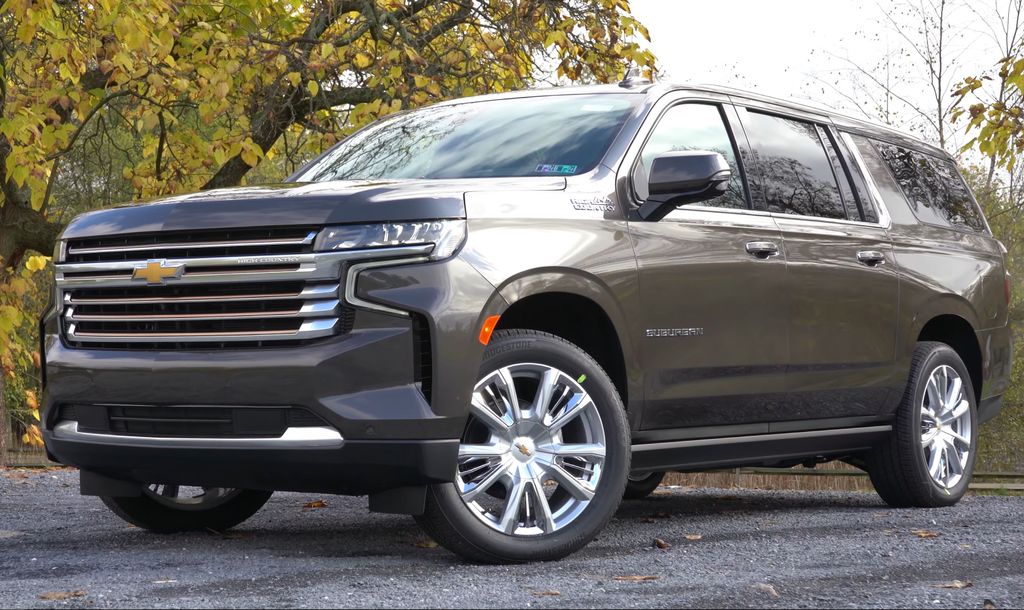
3. **Chevrolet Suburban**The Chevrolet Suburban’s V8 engine stands as a testament to American engineering capabilities, skillfully combining a traditional pushrod design with modern technological advancements to produce an exceptionally durable powerplant. The longevity of this engine is rooted in its fundamentally overbuilt architecture, which includes a deep-skirt cast-iron block. This construction provides superior structural rigidity and more effective vibration damping compared to many more complex, contemporary engine designs.
A defining characteristic of the Suburban’s engine is its considerable low-end torque production. This allows the engine to operate at relaxed RPMs even when the vehicle is heavily loaded, a reduced operational strain that directly contributes to an extended service life. While the pushrod valve configuration might appear somewhat dated when compared to overhead cam designs, it offers notable advantages in terms of simplicity and durability, having fewer moving parts that could potentially fail over time.
Chevrolet’s engineers have enhanced the conventional V8 formula by integrating modern technologies such as variable valve timing and direct injection, doing so without compromising the engine’s fundamental reliability. The cooling system is particularly noteworthy, featuring an oversized radiator alongside additional oil coolers for both the transmission and the differential. These components work together to maintain optimal operating temperatures, even during prolonged towing sessions or other demanding uses. A particularly impressive aspect is the engine’s serviceability; common maintenance points are easily accessible, and parts are widely available, making it remarkably cost-effective to keep a Suburban’s engine in peak condition when compared to more specialized SUVs.
This practical approach ensures that these engines remain viable even after accumulating extreme mileage. Fleet data offers compelling evidence of the Suburban’s engine durability, with commercial vehicles frequently exceeding 400,000 miles with only routine maintenance. The robustness of this engine has established the Suburban as a preferred choice among customers who require absolute reliability in challenging conditions, from law enforcement agencies to those undertaking remote expeditions. For buyers who prioritize a proven track record of longevity over the very latest technology, few SUV engines can rival the Suburban’s combination of durability, power, and operational simplicity.
Car Model Information: 2018 Chevrolet Suburban Premier
Name: Chevrolet Suburban,GMC Yukon XL
Caption: 2015 Chevrolet Suburban 1500 LTZ
Manufacturer: General Motors
Aka: Chevrolet Veraneio (Brazil, 1964–1995),GMC Carryall (1960–1972),GMC Suburban (1937–1999),GMC Yukon XL (from 2000),Holden Suburban (Australia/New Zealand, 1998–2001)
Production: 1934–present
Class: Full-size,station wagon
Layout: Front-engine, rear-wheel-drive layout,rear-wheel drive
Related: ubl
Categories: 1940s cars, 1950s cars, 1960s cars, 1970s cars, 1980s cars
Summary: The Chevrolet Suburban is a series of SUVs built by Chevrolet. The longest-produced automobile nameplate in the world, the Suburban has been made since 1934, and is currently in its twelfth generation (2021–present). Beginning life as one of the first metal-bodied station wagons, the Suburban is the progenitor of the modern full-size sport utility vehicle, combining a wagon-style body with the chassis and powertrain of a pickup truck. Alongside its Advance Design, Task Force, and C/K predecessors, the Chevrolet Silverado currently shares chassis and mechanical commonality with the Suburban and other trucks.
Traditionally one of the most profitable vehicles sold by General Motors, the Suburban has been marketed through both Chevrolet and GMC for nearly its entire production. Along sharing the Suburban name with Chevrolet, GMC has used several nameplates for the model line; since 2000, the division has marketed it as the GMC Yukon XL, while since 2003 Cadillac has marketed the Suburban as the Cadillac Escalade ESV. During the 1990s, GM Australia marketed right-hand drive Suburbans under the Holden brand.
The Suburban is sold in the United States, Canada, Mexico, Central America, Chile, Dominican Republic, Bolivia, Peru, Philippines, and the Middle East (except Israel), while the Yukon XL is sold only in North America (exclusive to the United States, Canada, and Mexico) and the Middle East territories (except Israel).
A 2018 iSeeCars.com study identified the Chevrolet Suburban as the car that is driven the most each year. A 2019 iSeeCars.com study named the Chevrolet Suburban the second-ranked longest-lasting vehicle. In December 2019, the Hollywood Chamber of Commerce unveiled a Hollywood Walk of Fame star for the Suburban, noting that the Suburban had been in “1,750 films and TV shows since 1952.”
Get more information about: Chevrolet Suburban
Buying a high-performing used car >>>
Brand: Chevrolet Model: Suburban
Price: $26,950 Mileage: 93,831 mi.
Read more about: The Ultimate Guide: 15 Crossover SUVs Engineered to Surpass 270,000 Kilometers Without Major Breakdowns

4. **Toyota 4Runner**The Toyota 4Runner’s V6 engine is widely regarded as one of the most robust powerplants ever integrated into an SUV, having achieved legendary status for its exceptional durability. This naturally aspirated engine features an aluminum block with cast-iron cylinder sleeves, a configuration that offers an ideal balance between weight reduction and structural integrity, both of which are crucial contributors to its remarkable longevity. A defining characteristic of the 4Runner’s engine is its conservative engineering approach.
Unlike competitors that pursue maximum horsepower figures with highly stressed components, Toyota deliberately designed this engine to operate comfortably within its mechanical limits. The timing chain system, in contrast to the timing belts found in many other vehicles, rarely requires replacement and maintains precise valve timing throughout the engine’s extended operational lifespan. The 4Runner’s cooling system merits special acknowledgement, equipped with an oversized radiator and an oil cooler that effectively maintain optimal operating temperatures, even when the vehicle is used in extreme environments.
This robust thermal management capability is instrumental in preventing the accelerated wear that can affect less robustly engineered engines when subjected to challenging conditions such as towing or extensive off-road driving. Toyota’s renowned quality control ensures exceptional consistency across its production runs, with each engine undergoing rigorous testing before installation. The engine management system prioritizes reliability over extracting every possible horsepower, maintaining conservative air-fuel ratios that shield internal components from excessive stress.
Service records from vehicles with high mileage consistently indicate minimal internal wear, even after more than 300,000 miles of operation. The inherent durability of the engine is further complemented by its excellent serviceability; accessible components simplify maintenance for owners. This practical design philosophy ensures that these engines remain viable transportation solutions for many decades rather than just a few years. For adventure-oriented buyers who demand absolute reliability when venturing far from developed areas, the 4Runner’s engine provides unmatched peace of mind. Its proven capability to accumulate substantial mileage without major mechanical intervention makes it an ideal selection for those seeking an SUV that genuinely offers a lifetime of service with proper maintenance.
Car Model Information: 2023 Toyota 4Runner TRD Off Road
Name: Toyota 4Runner
Caption: 2025 Toyota 4Runner, TRD Sport trim
Manufacturer: Toyota
Aka: Toyota Hilux Surf (Japan, 1983–2009)
Production: October 1983 – present
ModelYears: 1984–present (US)
Class: unbulleted list
Layout: unbulleted list
Chassis: Body-on-frame
Successor: unbulleted list
Categories: 1990s cars, 2000s cars, 2010s cars, 2020s cars, All-wheel-drive vehicles
Summary: The Toyota 4Runner is an SUV manufactured by the Japanese automaker Toyota and marketed globally since 1984, across six generations. In Japan, it was marketed as the Toyota Hilux Surf and was withdrawn from the market in 2009. The original 4Runner was a compact SUV and little more than a Toyota Hilux pickup truck with a fiberglass shell over the bed, but the model has since undergone significant independent development into a cross between a compact and a mid-size SUV. All 4Runners have been built in Japan at Toyota’s plant in Tahara, Aichi, or at the Hino Motors (a Toyota subsidiary) plant in Hamura. The name “4Runner” was created by copywriter Robert Nathan with the Saatchi & Saatchi advertising company as a play on the term “forerunner”. The agency held contests to invent new names for Toyota’s forthcoming vehicles. According to Toyota, the “4” described the vehicle’s 4-wheel drive system while “Runner” was a reference to its all-terrain capabilities and how it could “run” off-road. For some markets, the Hilux Surf was replaced in 2005 by the lower cost but similar Fortuner, which is based on the Hilux platform. As of 2021, the 4Runner is marketed in the Bahamas, Bolivia, Canada, Chile, Colombia, Costa Rica, El Salvador, Guatemala, Panama, Peru, the United States and Venezuela. Many markets that did not receive the 4Runner, such as Europe and the Middle East, instead received the similarly designed Land Cruiser Prado, another SUV that shared many of the same components. The 4Runner came in at number five in a 2019 study by iSeeCars.com ranking the longest-lasting vehicles in the US. The 4Runner had 3.9 percent of vehicles over 200,000 miles (320,000 km), according to the study.
Get more information about: Toyota 4Runner
Buying a high-performing used car >>>
Brand: Toyota Model: 4Runner
Price: $43,495 Mileage: 35,584 mi.
Read more about: The Ultimate Guide: 15 Crossover SUVs Engineered to Surpass 270,000 Kilometers Without Major Breakdowns
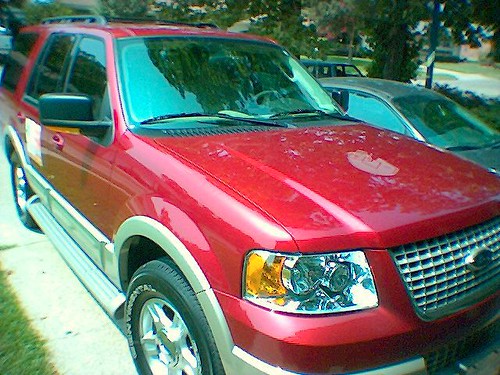
5. **Ford Expedition**The Ford Expedition’s EcoBoost V6 engine represents a contemporary approach to durability, demonstrating that advanced turbocharged designs can indeed deliver exceptional longevity when engineered appropriately. This powerplant combines a relatively compact displacement with twin turbochargers, enabling it to produce power levels comparable to a V8 engine. It also potentially offers superior long-term reliability through its reduced reciprocating mass and lower internal friction. A distinguishing feature of the Expedition’s engine is its robust internal construction.
Ford engineers have incorporated components typically reserved for high-performance applications, such as forged connecting rods, a forged crankshaft, and piston cooling jets, into this family SUV engine. This approach of over-building provides a significant margin of safety under standard operating conditions, thereby substantially contributing to the engine’s overall durability. The sophisticated cooling system is particularly noteworthy, featuring an integrated water-cooled exhaust manifold. This innovative design dramatically reduces thermal stress on critical components and maintains consistent operating temperatures, even under heavy loads, which prevents the accelerated wear that can plague less thoroughly engineered turbocharged engines.
Ford’s advanced lubrication system includes an oil-to-water cooler and maintains optimal oil temperatures through a variable-displacement oil pump. This system extends the service life of bearing surfaces, which typically play a crucial role in determining an engine’s ultimate longevity. The direct injection system ensures precise fuel delivery while simultaneously assisting in keeping intake valves cleaner than in many competitive designs. Fleet data provides compelling evidence of this engine’s durability, with commercial examples frequently exceeding 250,000 miles with only routine maintenance.
The robustness of this powerplant has made it increasingly popular among customers who require both power and reliability in challenging conditions, ranging from towing enthusiasts to long-distance travelers. For buyers who seek modern fuel efficiency without compromising long-term durability, the Expedition’s EcoBoost engine offers an impressive combination of advanced technology and exceptional reliability. Its proven capability to deliver years of trouble-free service while handling demanding tasks makes it a prominent choice for those who prioritize engine longevity in their SUV investment.
Continuing our exploration of SUVs engineered for enduring automotive excellence, this section delves into five additional models that demonstrate remarkable longevity. These vehicles, much like those previously discussed, feature specific design and engineering factors ensuring their engines and core components can reliably withstand hundreds of thousands of miles of use, offering owners peace of mind and significant long-term value. We maintain our focus on objective analysis, presenting factual insights into why these machines stand the test of time, based on thorough testing and real-world owner experiences.
Car Model Information: 2019 Ford Expedition Max Limited
Name: Ford Expedition
Manufacturer: Ford Motor Company
Production: 1996–present
ModelYears: 1997–present
Class: Full-size car,Sport utility vehicle
Related: Lincoln Navigator
BodyStyle: Sport utility vehicle
Layout: Front-engine, rear-wheel-drive layout,Front-engine, four-wheel-drive layout
Chassis: Body-on-frame
Predecessor: Ford Bronco,Ford Excursion
Categories: 2000s cars, 2010s cars, 2020s cars, All-wheel-drive vehicles, All Wikipedia articles written in American English
Summary: The Ford Expedition is a full-size SUV produced by Ford Motor Company since the 1997 model year. The successor to the Ford Bronco, the Expedition shifted its form factor from an off-road oriented vehicle to a truck-based station wagon. Initially competing against the Chevrolet Tahoe, the Expedition also competes against the Toyota Sequoia, Nissan Armada, and the Jeep Wagoneer.
First used for a 1992 F-150 concept vehicle, Ford first marketed the Expedition nameplate for 1995 on a trim level package for the two-door Ford Explorer Sport. As with its Bronco predecessor, the Expedition is heavily derives its chassis from the Ford F-150, differing primarily in suspension configuration. All five generations of the Expedition have served as the basis of the Lincoln Navigator–the first full-size luxury SUV. The model line is produced in two wheelbases (an extended-wheelbase variant introduced was introduced for 2007, largely replacing the Ford Excursion), with seating for up to eight passengers.
Ford currently assembles the Expedition at its Kentucky Truck Assembly facility (Louisville, Kentucky) alongside the Lincoln Navigator and Super Duty trucks. Prior to 2009, the model line was assembled by the Michigan Assembly Plant (Wayne, Michigan).
Get more information about: Ford Expedition
Buying a high-performing used car >>>
Brand: Ford Model: Expedition
Price: $28,885 Mileage: 82,142 mi.
Read more about: The Ultimate Guide: 15 Crossover SUVs Engineered to Surpass 270,000 Kilometers Without Major Breakdowns
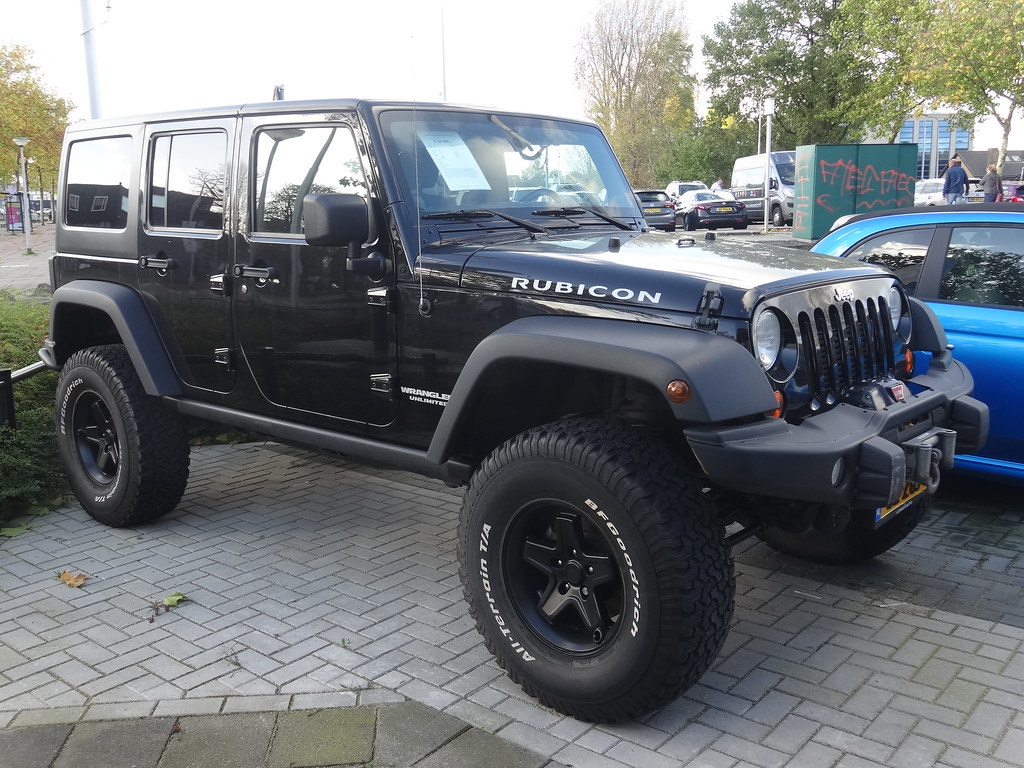
6. **Jeep Wrangler**The Jeep Wrangler’s Pentastar V6 engine has cemented its reputation as one of the most consistently dependable powerplants within the SUV segment. It masterfully combines smooth, responsive performance with an exceptional level of durability, providing a powertrain that withstands the rigors of both daily driving and demanding off-road excursions. This naturally aspirated engine is built upon an aluminum block featuring high-strength internals, a lightweight yet robust foundation crucial for its impressive and enduring operational lifespan.
What truly distinguishes the Wrangler’s engine is its meticulously engineered balance between modern technological advancements and time-tested, proven engineering principles. Chrysler’s engineers prioritized long-term reliability during the design process, deliberately avoiding overly complex systems that could potentially compromise its durability over extended periods. The dual overhead camshaft layout, combined with roller finger followers, plays a significant role in reducing valve train friction and wear, effectively extending the service life of these critical components to well beyond 300,000 miles in examples that receive proper and consistent maintenance.
Furthermore, the cooling system in the Wrangler’s Pentastar engine merits special recognition due to its integrated exhaust manifold design. This innovative approach not only enhances thermal management but also reduces the overall component count, contributing to its inherent reliability. This clever design ensures optimal operating temperatures are maintained, even when the vehicle is subjected to extreme off-road conditions or prolonged low-speed crawling. Such robust thermal management is vital in preventing the accelerated wear that can affect less thoroughly engineered engines during challenging usage scenarios, safeguarding the engine’s internal integrity.
Jeep’s stringent quality control measures ensure remarkable consistency across all production runs, with each engine undergoing extensive testing before installation into the vehicle. The engine management system is carefully calibrated to maintain conservative operating parameters, protecting internal components while still delivering the responsive power that Wrangler owners have come to expect and rely upon. Service records from high-mileage examples consistently reveal minimal internal wear, even after substantial periods of use and accumulation of significant mileage.
The inherent durability of the Pentastar engine is further complemented by its excellent serviceability. A logical component layout ensures accessible maintenance points, making routine care straightforward for both owners and professional technicians. This practical and thoughtful approach to design guarantees that these engines remain viable and reliable for hundreds of thousands of miles. For adventure-seeking buyers who demand unwavering reliability when venturing far from civilization, the Wrangler’s Pentastar engine offers exceptional peace of mind, proving its capacity to handle extreme conditions and accumulate massive mileage without major mechanical intervention.
Read more about: Buyer Beware: 14 Cars Notorious for Breaking Down Prematurely, Especially After 100,000 Miles
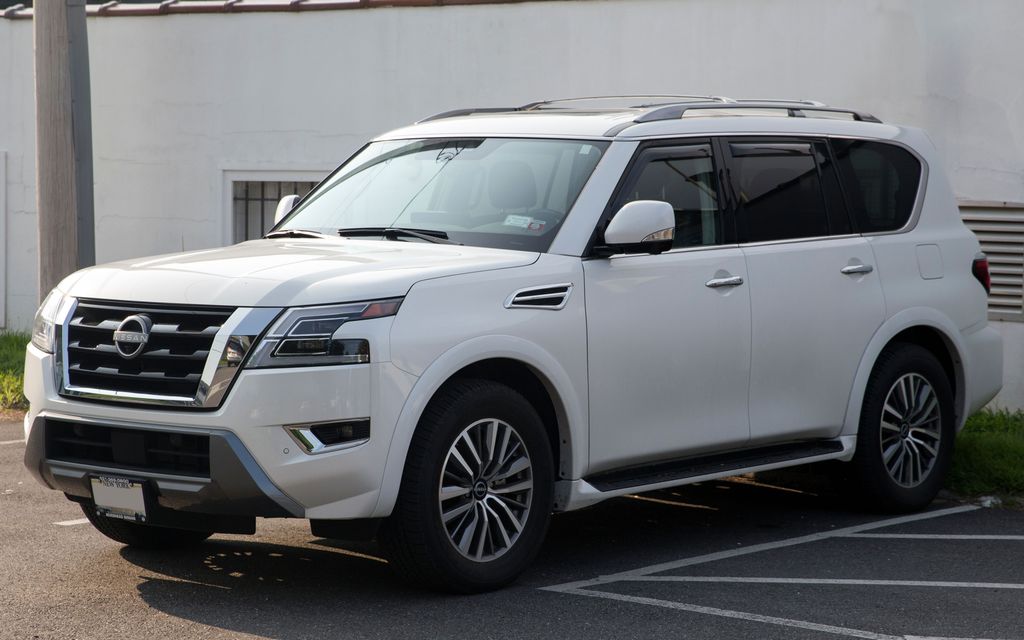
7. **Nissan Armada**The Nissan Armada’s V8 engine stands out as one of the most substantially overbuilt powerplants in the entire full-size SUV segment, having earned a stellar reputation for its exceptional durability. This naturally aspirated engine utilizes a robust iron block paired with aluminum heads, providing an ideal combination of inherent strength and efficient heat dissipation. This foundational design directly contributes to its remarkable longevity, ensuring it can withstand prolonged and demanding operational conditions over many years.
A distinguishing characteristic of the Armada’s engine is its fundamentally conservative engineering approach. While many competitors constantly chase ever-higher specific output figures, Nissan deliberately designed this engine to operate comfortably within its mechanical limits. The result of this considered strategy is a powerplant that consistently delivers smooth, reliable performance while maintaining a substantial reserve of strength, which directly translates to an extended and dependable service life for the vehicle as a whole.
The timing chain system in the Armada deserves particular mention, featuring overbuilt components that rarely necessitate replacement, even at extremely high mileages. This stands in stark contrast to the timing belts or problematic chain designs found in many competitive vehicles, which often become points of concern for owners. This meticulous attention to detail extends throughout the entire engine, encompassing robust bearing surfaces and precisely controlled clearances that collectively maintain proper oil pressure well into the six-figure mileage territory, further enhancing its long-term reliability.
Nissan’s advanced cooling system for the Armada incorporates multiple thermostats and precise flow management techniques, specifically designed to maintain consistent operating temperatures across the entire engine. This system effectively prevents localized hot spots that can accelerate wear in less thoroughly engineered designs, thereby preserving critical components even during demanding conditions such as heavy towing or extended periods of idling. Such thermal stability is paramount for engine health and longevity.
Service records compiled from high-mileage examples consistently demonstrate minimal internal wear, even after accumulating well over 300,000 miles of operation. This impressive track record underscores the engine’s inherent durability. Furthermore, this fundamental robustness is enhanced by excellent serviceability, with straightforward access to common maintenance points that actively encourage regular and timely care. This practical design approach ensures that these engines remain viable and reliable for many decades, rather than just a few years, making the Armada a sound choice for longevity-focused buyers.
Car Model Information: 2011 Nissan Armada SV
Caption: 2023 Nissan Armada
Manufacturer: Nissan
Aka: Nissan Patrol
Production: 2003–present
ModelYears: 2004–present
Class: Full-size,sport utility vehicle
BodyStyle: SUV
Layout: Front-engine, rear-wheel-drive layout
Categories: 2010s cars, 2020s cars, All-wheel-drive vehicles, All Wikipedia articles written in American English, All articles with unsourced statements
Summary: The Nissan Armada (originally badged as the Nissan Pathfinder Armada) is a full-size SUV manufactured by Nissan for the North American market, since 2003 for the 2004 model year.
From 2003 to 2015, the first-generation Armada was assembled in Canton, Mississippi based on the Nissan Titan. From mid-2016 onwards, the second-generation Armada is built in Yukuhashi, Kyushu, Japan. It shares the same platform as the Nissan Patrol, with American-specific modifications, and went on sale in mid-2016 as a 2017 model. A luxury version of the Armada has been sold as the Infiniti QX80 (originally QX56).
Get more information about: Nissan Armada
Buying a high-performing used car >>>
Brand: Nissan Model: Armada
Price: $8,645 Mileage: 149,775 mi.
Read more about: Decoding the Duds: 14 New Cars to Skip This Year, From Transmission Troubles to Infotainment Nightmares
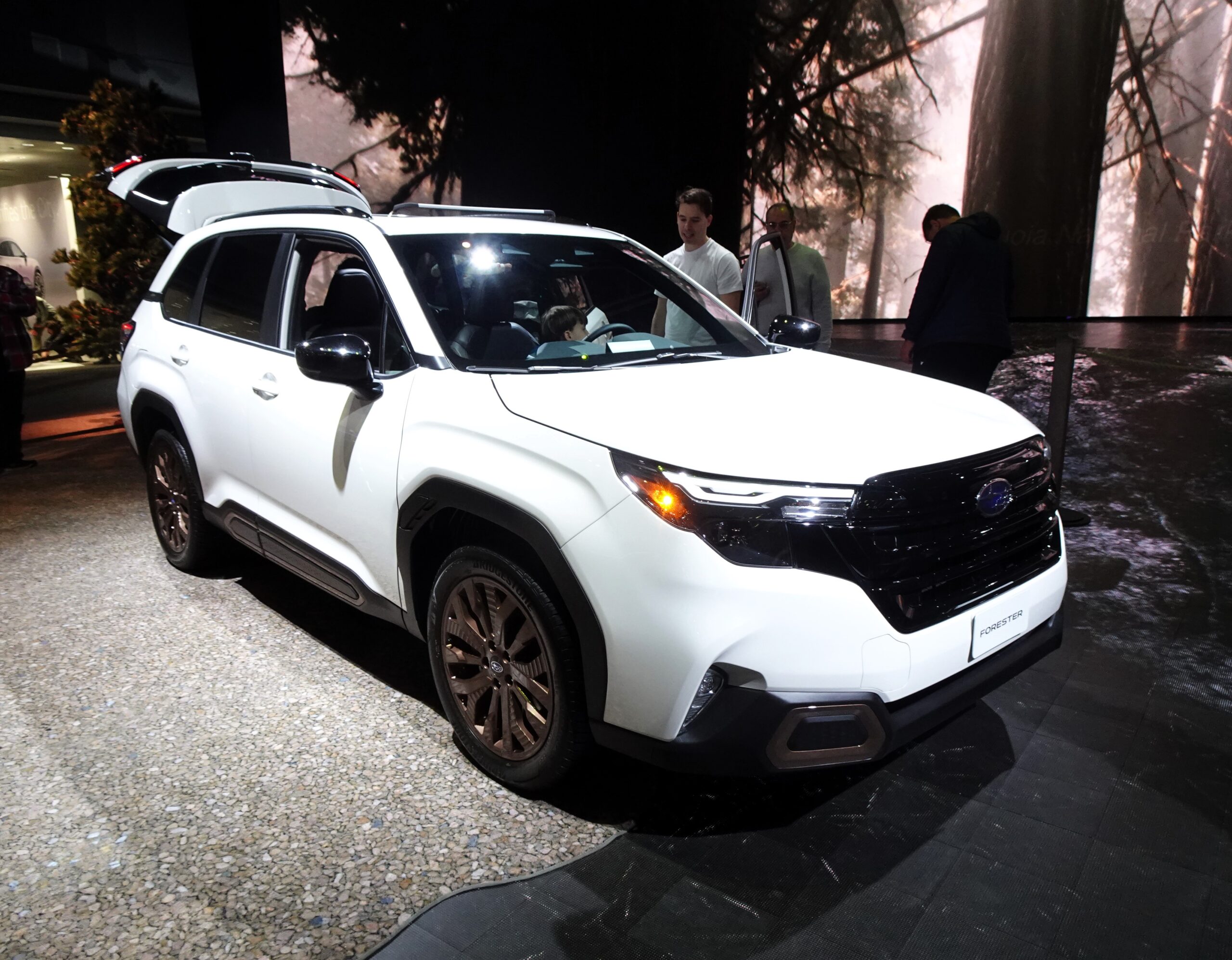
8. **Subaru Forester**The Subaru Forester’s boxer engine design represents a significant departure from conventional powerplants, delivering exceptional durability through its unique horizontal cylinder arrangement. This distinctive configuration positions opposing pistons on each side of the crankshaft, a setup that naturally creates a harmonious balance. This inherent balance virtually eliminates the vibration and internal stress that gradually contribute to the degradation of conventional inline or V-configuration engines over extended periods of time, thus significantly enhancing the engine’s intrinsic longevity.
What truly distinguishes the Forester’s engine is its seamless integration with Subaru’s renowned symmetrical all-wheel-drive system. The inherently flat boxer design allows for perfect longitudinal placement within the vehicle’s chassis and contributes to a lower center of gravity. This thoughtful engineering reduces strain on engine mounts and transmission components, areas that often become limiting factors for longevity in other SUV designs. This holistic engineering approach results in a powertrain where every component works in precise harmony, collectively extending the service life of the entire system.
Subaru’s unwavering commitment to continuous improvement has led to the meticulous refinement of this engine platform over several decades. This evolutionary process has successfully addressed issues present in earlier models while steadfastly maintaining the fundamental architecture that underpins its exceptional reliability. The modern timing chain system, a significant upgrade from the timing belts found in previous generations, now provides maintenance-free operation for the engine’s primary valvetrain components. This eliminates a common point of potential failure and costly replacement that is often encountered in many competitors’ engine designs.
The cooling system in the Forester deserves special recognition, featuring precise coolant flow management that diligently maintains consistent temperatures across all cylinders. This is a particularly challenging feat to achieve in horizontally-opposed engines, yet Subaru’s design excels. This thermal stability is crucial for preserving critical components, even during demanding conditions such as navigating steep mountain roads or undergoing extended periods of high-load operation, thereby preventing accelerated wear and ensuring long-term health of the engine.
Service records from high-mileage examples consistently illustrate remarkable internal cleanliness and exhibit minimal wear patterns, even after accumulating well over 250,000 miles. This speaks volumes about the intrinsic durability of the boxer engine. Furthermore, the engine’s inherent robustness is complemented by excellent serviceability; the boxer configuration provides straightforward access to commonly serviced components such as spark plugs and valve covers, simplifying maintenance for owners. For buyers seeking exceptional reliability combined with all-weather capability, the Forester’s boxer engine offers a unique combination of proven durability and consistent performance. Its proven capacity to deliver trouble-free operation for hundreds of thousands of miles makes it an ideal choice for practical owners who view their vehicles as prudent long-term investments.
Car Model Information: 2022 Subaru Forester Wilderness
Name: Subaru Forester
Manufacturer: Subaru
Production: 1997–present
Class: Compact crossover SUV
BodyStyle: SUV
Related: Subaru Impreza
Layout: Front-engine, all-wheel drive
Predecessor: Subaru Bighorn
Categories: 2000s cars, 2010s cars, All-wheel-drive vehicles, All Wikipedia articles written in American English, All articles containing potentially dated statements
Summary: The Subaru Forester is a compact crossover SUV that has been manufactured by Subaru since 1997. The first generation was built on the platform of the Impreza in the style of a taller station wagon, a style that continued to the second generation, while the third-generation model onwards moved towards a crossover SUV design. A performance model was available for the second-generation Forester in Japan as the Forester STi.
Get more information about: Subaru Forester
Buying a high-performing used car >>>
Brand: Subaru Model: Forester
Price: $25,330 Mileage: 65,018 mi.
Read more about: The Enduring Dozen: 12 Utility Vehicles Built to Conquer 220,000+ Miles and Beyond
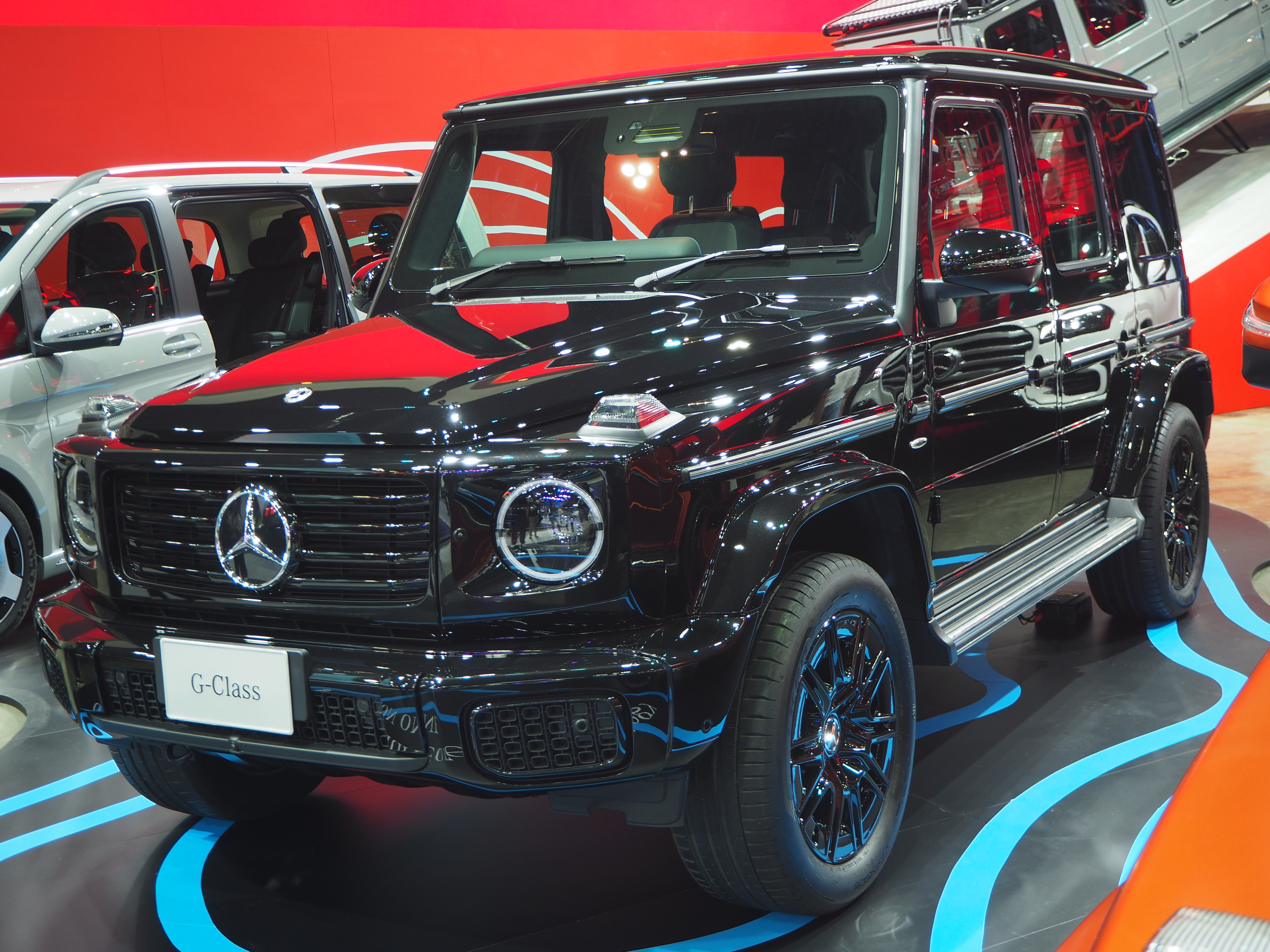
9. **Mercedes-Benz G-Class**The Mercedes-Benz G-Class, particularly when equipped with its robust diesel engine, stands as a testament to the pinnacle of German engineering durability. This powerplant masterfully combines old-world robustness with sophisticated modern technology, creating an ideal balance between uncompromising strength and refined performance. It utilizes a cast-iron block, often paired with strategically placed aluminum components where appropriate, which collectively creates a resilient foundation that significantly contributes to its legendary longevity and ability to withstand extreme conditions.
What truly sets the G-Class engine apart is its fundamentally overbuilt design philosophy. Mercedes engineers deliberately incorporate massive safety margins into every single component, from the meticulously forged crankshaft to the generously oversized main bearings. This comprehensive approach results in a powerplant that operates comfortably within its mechanical limits, even when pushed to its extremes, directly translating to an exceptional service life under normal, demanding, and even extraordinary operating conditions. This commitment to engineering overkill ensures enduring reliability.
Moreover, the sophisticated injection system within the G-Class diesel engine merits special recognition. It delivers precisely metered fuel across all operating conditions, while critically maintaining conservative internal pressures compared to more highly stressed competitors. This balanced approach provides robust power delivery without ever compromising the fundamental durability that G-Class owners expect and demand from such a prestigious and capable vehicle. This harmonious blend of power and preservation is a hallmark of its design.
Mercedes-Benz’s rigorous quality control processes ensure remarkable consistency across all production runs, with each engine undergoing extensive and thorough testing before its installation. The advanced cooling system incorporates multiple circuits with precise temperature management, diligently maintaining optimal operating conditions for all components. This is crucial even during extreme off-road usage or prolonged high-speed cruising, preventing the thermal degradation that can impact less robust designs and preserving the engine’s vital internal health over its extended life.
Service records from high-mileage examples consistently reveal minimal internal wear, even after accumulating well over 500,000 kilometers (or approximately 300,000 miles) of operation. The engine’s inherent durability is further complemented by excellent serviceability, featuring a logical component layout and accessible maintenance points that actively encourage regular care. This practical design approach ensures that these engines remain viable and robust for many decades. For buyers seeking the ultimate combination of prestige, formidable capability, and bulletproof reliability, the G-Class diesel engine offers unmatched peace of mind.
Read more about: The Ultimate Guide: 15 Crossover SUVs Engineered to Surpass 270,000 Kilometers Without Major Breakdowns
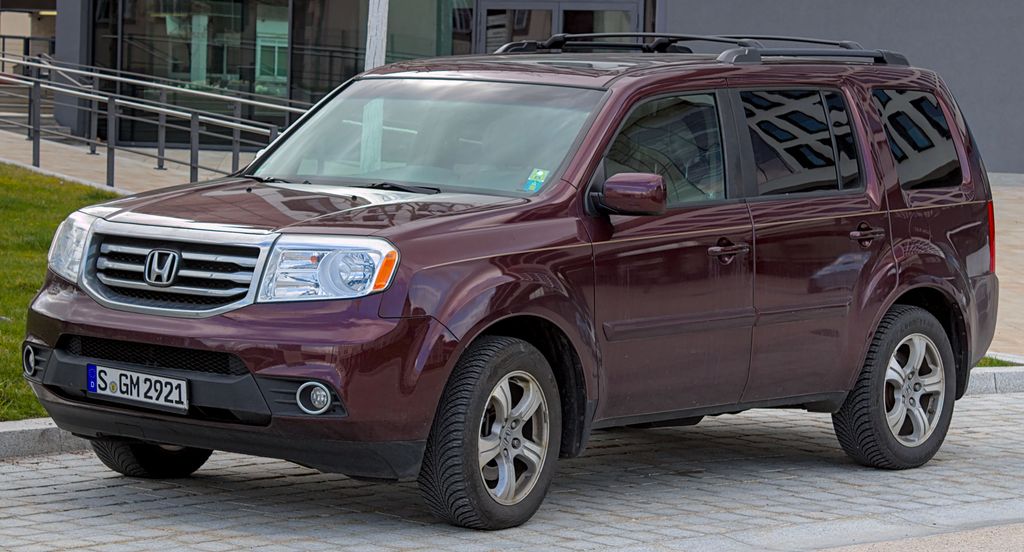
10. **Honda Pilot**The Honda Pilot’s V6 engine serves as an exemplary showcase of Japanese engineering excellence, seamlessly combining sophisticated design principles with meticulous manufacturing processes. This results in a powerplant that is widely renowned for its exceptional durability and long-term reliability. This naturally aspirated engine features a precision-cast aluminum block meticulously fitted with robust iron cylinder sleeves, providing an ideal and crucial balance of desirable weight reduction and superior wear resistance, both of which contribute significantly to its impressive and enduring longevity.
What truly distinguishes the Pilot’s V6 engine is its advanced valve management system, which possesses the remarkable capability to seamlessly transition between different operating modes. This intelligent design optimizes both performance output and the overall engine life. By strategically reducing internal stress during steady highway cruising while simultaneously delivering responsive power when it is most needed, this system significantly extends the service life of critical components, particularly when compared to less sophisticated engines that often operate under constant, unmitigated stress.
Honda’s legendary attention to detail is profoundly evident in the Pilot’s comprehensive oil circulation system. This system incorporates additional passages and precisely sized galleries, meticulously designed to ensure that all critical components receive optimal lubrication under a wide array of operating conditions, safeguarding against wear. Furthermore, the timing belt system (or a timing chain in newer iterations) benefits from Honda’s extensive engineering experience, with service intervals that are carefully based on exhaustive real-world testing rather than optimistic, theoretical projections.
The cooling system in the Honda Pilot also warrants special recognition. It incorporates multiple circuits with precise flow management, diligently maintaining consistent temperatures across the entire engine. This advanced thermal stability is instrumental in preventing the localized hot spots that can accelerate wear in less thoroughly engineered designs, thereby preserving critical components even during demanding conditions such such as towing heavy loads or ascending steep mountain grades. This thoughtful thermal management ensures long-term engine health.
Service records compiled from high-mileage examples consistently demonstrate remarkable internal cleanliness and exhibit minimal wear patterns, even after accumulating well over 300,000 miles. This exceptional track record underscores the engine’s inherent durability. Furthermore, this fundamental robustness is complemented by excellent serviceability, featuring a logical component layout and accessible maintenance points that actively encourage regular and timely care. This practical design approach ensures that these engines remain viable and robust for hundreds of thousands of miles.
Car Model Information: 2014 Honda Pilot EX-L
Name: Honda Pilot
Caption: 2023 Honda Pilot Touring (US)
Manufacturer: Honda
Production: 2002–present
ModelYears: 2003–present
Class: Mid-size crossover SUV
BodyStyle: SUV
Layout: unbulleted list
Categories: 2010s cars, 2020s cars, All-wheel-drive vehicles, All Wikipedia articles written in American English, All articles containing potentially dated statements
Summary: The Honda Pilot is a mid-size crossover SUV with three-row seating manufactured by Honda since 2002 for the 2003 model year. Primarily aimed at the North American market, the Pilot is the largest SUV produced by Honda. As of 2025, the Pilot is manufactured in Lincoln, Alabama, and the Pilot was produced in Alliston, Ontario until April 2007. The first generation Pilot was released in April 2002 as a 2003 model.
The Pilot shares its platform with the Acura MDX, as well as the North American market Odyssey minivan. The Pilot’s unibody construction and independent suspension are designed to provide handling similar to that of a car, and it has integrated perimeter frame rails to permit towing and light off-road use.
Prior to the introduction of the Pilot, Honda marketed the compact crossover CR-V, the midsize Passport (rebadged Isuzu Rodeo) fullsize Crossroad (rebadged Land Rover Discovery series 1) and Acura SLX (rebadged Isuzu Trooper). Unlike the Passport, Crossroad and SLX which were truck-based body-on-frame designs, the Pilot shared a unibody construction layout akin to the smaller Civic-based CR-V. The Pilot is Honda’s largest SUV, although the 2010 Crosstour surpassed the Pilot in length.
The Pilot is sold in North America and the Middle East, while the Honda MDX (first generation Acura MDX) was marketed in Japan and Australia for several years. The second-generation Pilot was also sold in Russia, Ukraine, South Korea, Latin America, and the Philippines.
Get more information about: Honda Pilot
Buying a high-performing used car >>>
Brand: Honda Model: Pilot
Price: $12,645 Mileage: 139,975 mi.
Read more about: Rev Up for 2025: 12 Sports Cars That Will Electrify Your Driving Experience and Set the Roads Ablaze
The pursuit of an SUV that truly lasts a lifetime is a goal well within reach for today’s discerning consumer. As our detailed analysis reveals, the key to exceptional longevity lies in a deliberate combination of proven engineering principles, robust material selection, and a commitment to conservative design. From the legendary V8s built for relentless work to sophisticated turbocharged V6s designed with reinforced internals, and even unique boxer engines providing inherent balance, manufacturers continue to deliver powerplants capable of enduring well beyond conventional expectations. While these ten SUVs represent the pinnacle of engine durability, remember that consistent, meticulous maintenance remains the indispensable partner in achieving these impressive milestones. By choosing one of these proven models and adhering to a diligent service schedule, you’re not just buying a vehicle; you’re investing in a steadfast companion ready for a lifetime of journeys, ensuring peace of mind and remarkable value for decades to come. Your next SUV can be more than just transportation—it can be a legacy of reliability.

